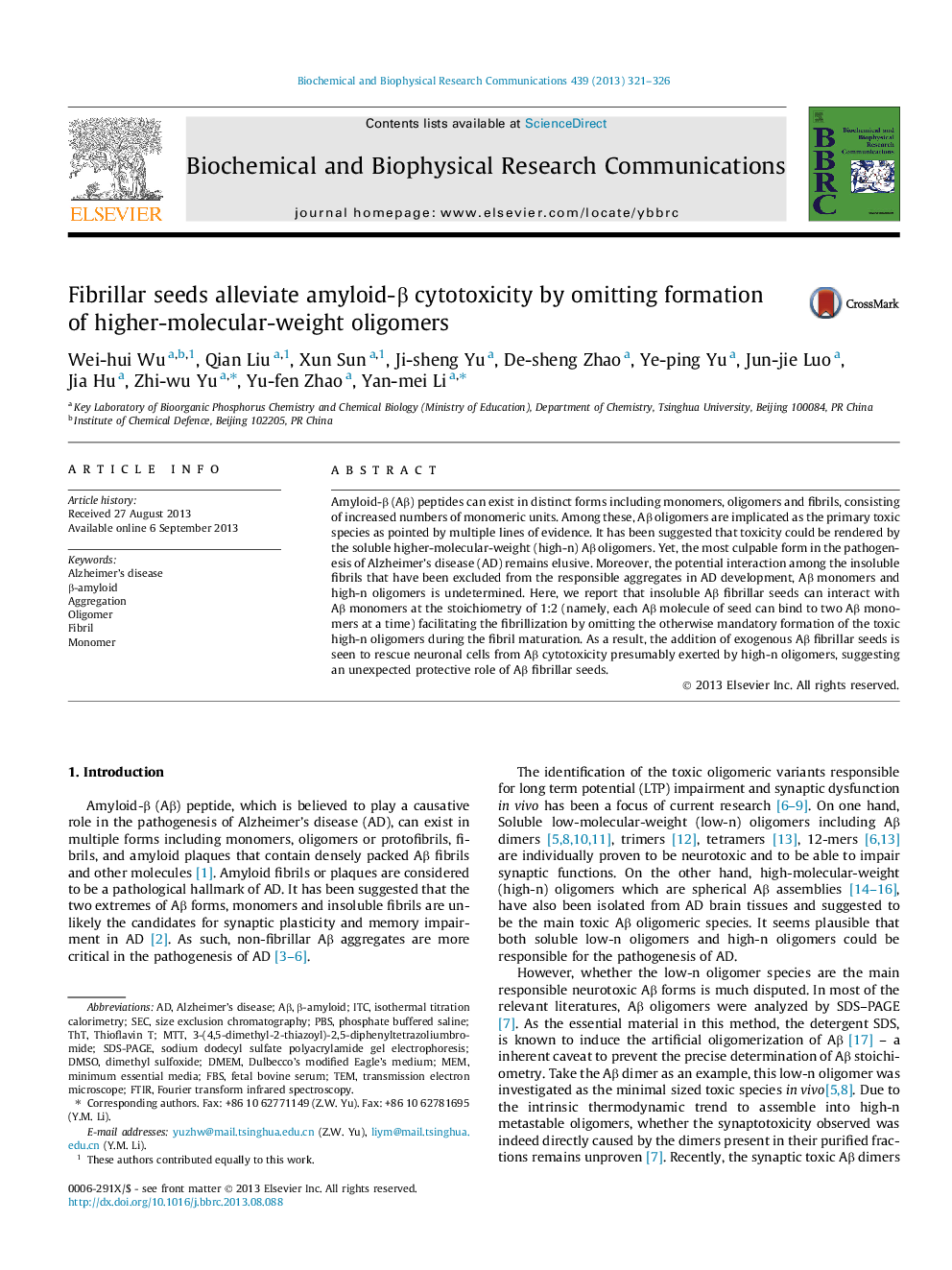| Article ID | Journal | Published Year | Pages | File Type |
|---|---|---|---|---|
| 10758144 | Biochemical and Biophysical Research Communications | 2013 | 6 Pages |
Abstract
Amyloid-β (Aβ) peptides can exist in distinct forms including monomers, oligomers and fibrils, consisting of increased numbers of monomeric units. Among these, Aβ oligomers are implicated as the primary toxic species as pointed by multiple lines of evidence. It has been suggested that toxicity could be rendered by the soluble higher-molecular-weight (high-n) Aβ oligomers. Yet, the most culpable form in the pathogenesis of Alzheimer's disease (AD) remains elusive. Moreover, the potential interaction among the insoluble fibrils that have been excluded from the responsible aggregates in AD development, Aβ monomers and high-n oligomers is undetermined. Here, we report that insoluble Aβ fibrillar seeds can interact with Aβ monomers at the stoichiometry of 1:2 (namely, each Aβ molecule of seed can bind to two Aβ monomers at a time) facilitating the fibrillization by omitting the otherwise mandatory formation of the toxic high-n oligomers during the fibril maturation. As a result, the addition of exogenous Aβ fibrillar seeds is seen to rescue neuronal cells from Aβ cytotoxicity presumably exerted by high-n oligomers, suggesting an unexpected protective role of Aβ fibrillar seeds.
Keywords
ITCPBSOligomerDMEMAβFBSSECDMSOMTTβ-AmyloidSDS-PAGESodium dodecyl sulfate polyacrylamide gel electrophoresisTemThTAlzheimer’s diseaseAggregationThioflavin Tminimum essential mediaDimethyl sulfoxidefetal bovine serumFTIRFourier transform infrared spectroscopyPhosphate buffered salineFibrilMEMDulbecco’s modified eagle’s mediumMonomerTransmission electron microscopeIsothermal titration calorimetrySize exclusion chromatography
Related Topics
Life Sciences
Biochemistry, Genetics and Molecular Biology
Biochemistry
Authors
Wei-hui Wu, Qian Liu, Xun Sun, Ji-sheng Yu, De-sheng Zhao, Ye-ping Yu, Jun-jie Luo, Jia Hu, Zhi-wu Yu, Yu-fen Zhao, Yan-mei Li,
